#weird al asian tour when .....
Explore tagged Tumblr posts
Text
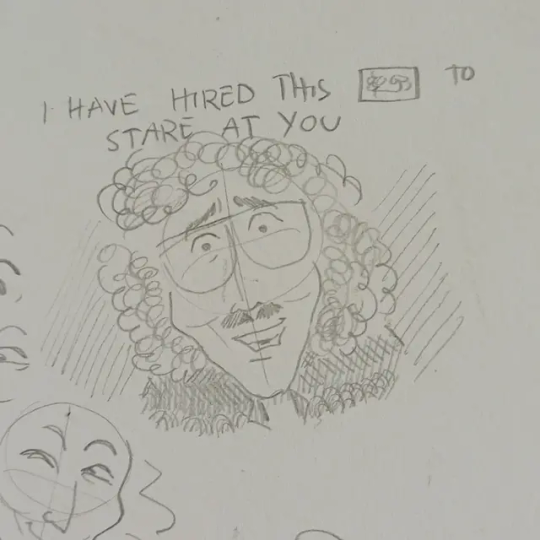

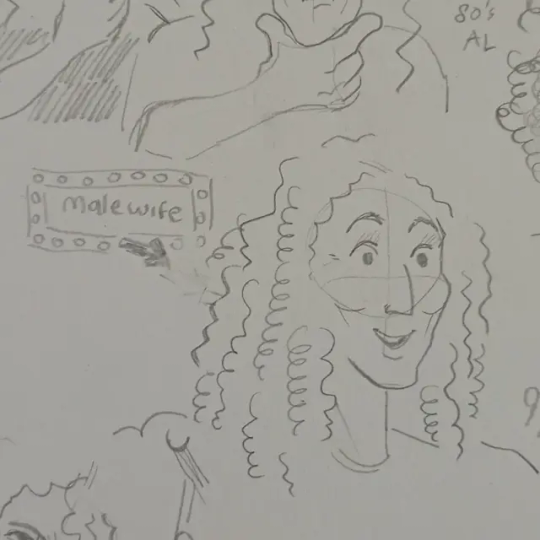

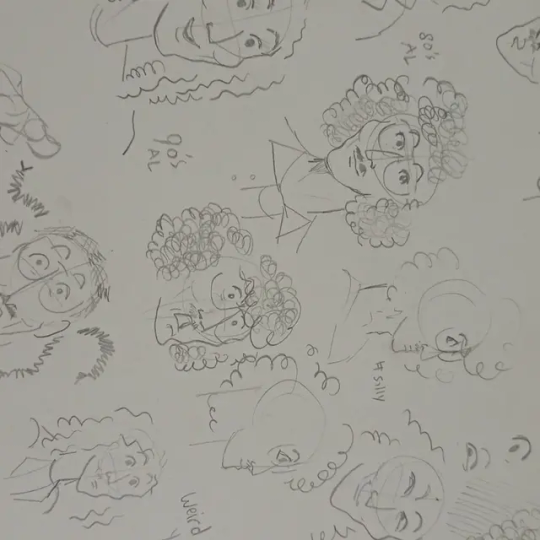
i dont want to over use the term brainrot but what word could possibly explain what i felt when i drew all of this
#weird al#weird al yankovic#doodles#dude.....#if i dont meet this man before he dies or retires my life will not BE COMPLETE#weird al asian tour when .....#SIGHHH HES so sexy guys#I CANT TAKE IT#I CANT TAKE IT ANYMORE#AGAHHHHHHHH#*jumps off the bridge*#also i finally drew germs performance correctly#i found a better way to draw weird al so i posted it hehe
59 notes
·
View notes
Text

My books are on sale for pride season. Usually $20 each, you can get all three volumes of Queer & Trans Artists of Color for only $50 (and free shipping) until the end of June. These books include interviews with Janet Mock, Julio Salgado, Vivek Shraya and more! Get the discount here. Full listing of interviewees below the break.
VOLUME ONE (2014) CO-EDITED BY TERRA MIKALSON & JESSICA GLENNON-ZUKOFF
Mixed-race queer art activist Nia King left a full-time job in an effort to center her life around making art. Grappling with questions of purpose, survival, and compromise, she started a podcast called We Want the Airwaves in order to pick the brains of fellow queer and trans artists of color about their work, their lives, and “making it” - both in terms of success and in terms of survival.
In this collection of interviews, Nia discusses fat burlesque with MAGNOLIAH BLACK, queer fashion with KIAM MARCELO JUNIO, interning at Playboy with JANET MOCK, dating gay Latino Republicans with JULIO SALGADO, intellectual hazing with KORTNEY RYAN ZIEGLER, gay gentrification with VAN BINFA, getting a book deal with VIRGIE TOVAR, the politics of black drag with MICIA MOSELY, evading deportation with YOSIMAR REYES, weird science with RYKA AOKI, gay public sex in Africa with NICK MWALUKO, thin privilege with FABIAN ROMERO, the tyranny of “self-care” with LOVEMME CORAZÓN, “selling out” with MISS PERSIA and DADDIE$ PLA$TIK, the self-employed art-activist hustle with LEAH LAKSHMI PIEPZNA-SAMARASINHA, and much, much more. Buy book one here.
VOLUME TWO (2016) CO-EDITED BY ELENA ROSE
Building on the groundbreaking first volume, Queer and Trans Artists of Color: Stories of Some of Our Lives, Nia King is back with a second archive of interviews from her podcast We Want the Airwaves. She maintains her signature frankness as an interviewer while seeking advice on surviving capitalism from creative folks who often find their labor devalued.
In this collection of interviews, Nia discusses biphobia in gay men’s communities with JUBA KALAMKA, helping border-crossers find water in the desert with MICHA CÁRDENAS, trying to preserve Indigenous languages through painting with GRACE ROSARIO PERKINS, revolutionary monster stories with ELENA ROSE, using textiles to protest police violence with INDIRA ALLEGRA, trying to respectfully reclaim one’s own culture with AMIR RABIYAH, taking on punk racism with MIMI THI NGUYEN, the imminent trans women of color world takeover with LEXI ADSIT, queer life in WWII Japanese American incarceration camps with TINA TAKEMOTO, hip-hop and Black Nationalism with AJUAN MANCE, making music in exile with MARTÍN SORRONDEGUY, issue-based versus identity-based organizing with TRISH SALAH, ten years of curating and touring with the QTPOC arts organization Mangos With Chili with CHERRY GALETTE, raising awareness about gentrification through games with MATTIE BRICE, self-publishing versus working with a small press with VIVEK SHREYA, and the colonial nature of journalism school with KILEY MAY. The conversation continues. Buy book two here.
VOLUME THREE (2019) CO-EDITED BY MALIHA AHMED
Is it possible to make art and make rent without compromising your values? Nia King set out to answer this question when she started We Want the Airwaves podcast in 2013. In her Queer & Trans Artists of Color book series, Nia collects podcast interviews — with Black, Latinx, Asian, Middle Eastern and Indigenous LGBTQ writers, musicians and visual artists — which feature both incredible storytelling and practical advice.
In the latest installment of the Queer & Trans Artists of Color series, Nia discusses performing at the White House with VENUS SELENITE, the global nature of colorism with KAMAL AL-SOLAYLEE, writing for Marvel Comics with GABBY RIVERA, using lies to tell unspeakable truths with KAI CHENG THOM, Black mental health with ANTHONY J. WILLIAMS, curating diverse anthologies with JOAMETTE GIL, growing up trans in rural Idaho with MEY RUDE, covering crime as a baby-faced reporter with SAM LEVIN, feminist approaches to journalism with SARAH LUBY BURKE, documenting Black punk history with OSA ATOE, crossing color lines with QWO-LI DRISKILL, fat hairy brown goddesses with PARADISE KHANMALEK, the usefulness of anger with JIA QING WILSON-YANG, transitioning as death and rebirth with ARIELLE TWIST, surviving homelessness and touring the world with STAR AMERASU and much, much more. Buy book three here.
5 notes
·
View notes
Note
If you don't mind me asking, how come you're able to live and work in Japan (and China?)? Where did it al begin? I'm just really curious! Thanks!
I don’t mind, thanks for asking! Turns out I’ve been doing some advising on this topic lately. (Scroll to the bottom for specific advice!)It all began with Digimon…
I’ve always had a history of moving from one obsession to another, starting back with Barney the Dinosaur. Then when I was 11-years-old I found myself very curious about that weird Japanese show on Fox Kids, which looked so different from the Western cartoons I was so fond of. What I caught of it kept me surprised–my stereotypes about it were wrong, the characters and their situations were complicated, and plot had depth? What was this and why did it make me care so much??Well, once I decided I was hooked, I was hooked. Obsessed overnight. I needed to know everything there was to know about it, including the country it came from. Guess I better learn Japanese, I thought.
That thought didn’t go away. I generally got obsessed with anime and Japanese culture, anything I could get my weeby little hands on. Wanting to know everything about Japan led to curiosity about China too, because if you’re going to stretch far back in the origins of Japanese culture, eventually you’re going to get interested in the big collection of nations and time periods known as Ancient China. (Stuff like Fushigi Yuugi and the anime rendition of Condor Hero sure helped drive that interest.)I stayed obsessed with Japan all through my teen years (and started Japanese study in earnest when I was 16) and I chose a college where I could start studying Chinese. It seemed like the natural progression in my studies by that point, but I guess other people thought it was surprising. Or they called me a traitor. (I can tell you now that lots and lots of people wind up studying both.)
Anyway, I went in to college with a pretty wide knowledge of East Asia, but studying it from all sorts of angles, getting good advising in school from nerdy professors, and studying abroad certainly made my understanding more nuanced. Going to a small school where it was easy to stick out also helped me get a good handful of work-study experiences and special attention for my particular passions. (It helps that a couple teachers were enamored with traditional Chinese culture, another loved Heian aesthetics, another wrote a dissertation about the production of shoujo manga, and another loved to give students free food. Now those are my people.)What most people find surprising was that even though I had a heavier course load in Asian studies, my major was Economics. I was concerned about finding work with only nerdy Asian studies, and I felt like I needed to save the world by working at an NGO and sacrificing my personal happiness for the sake of the poor and underprivileged. (I still feel like that, but thankfully there are more ways to support NGOs than only by working in them.) In my research topics I usually had a special focus on developing nations in Asia, and I made sure to get a good understanding of the whole region, not just, like, Edo period gay samurai fanfiction (yeah, that was totally a thing).Well, anyway, I never worked at an NGO. I went to grad school to keep working on my Chinese while keeping up independent Japanese study (including the JLPT), then I worked for the one international company in my hometown doing stuff for their Asian side of business. It was cool if you had any interest in engineering, but I didn’t. I like culture. The weeb shit, as it’s known. All according to keikaku, I became a Coordinator for International Relations on the JET Program (it’s not all English teachers!), and had the time of my life in Matsue (my love for that place is seeeeerious). That’s when I took my wide knowledge of Japan and started getting deeper knowledge, by doing anything and everything, especially practicing naginata, tea ceremony, and competitive kimono dressing. (I like to say I broke the weeb scale a long time ago.) Even among CIRs, who all speak Japanese fairly fluently, I guess I was noteworthy for my nerdy knowledge of obscure pieces of local culture, and my enthusiasm for sharing it. That’s just me being my obsessive self, folks. But yeah, lots of JET Program participants are obsessive and eager to go out and experience things. Aaaahhh, my people. After that, I felt I needed more experience in China, so I got a teaching job (which is relatively easy to do, if you’re a native English speaker). Due to my work schedule and living in Shanghai as opposed to like, Wuyishan or even Hangzhou, I didn’t devote as much as to cultural classes as I originally planned on, but I did practice tea and martial arts throughout my time there, and I continued to work on my Mandarin and gaining obscure cultural knowledge, but especially gaining experience melding with society there. Although it was more overwhelming, I do feel much more competent with my Chinese skills now, and I still love a lot of the culture and have so much more traveling I want to do there. I can still nerd out so hard for so much there.Moving back to Japan felt like a very natural course of things. I know a lot of people who have been happy to be Japan-nerds from a distance, or do the JET Program for a while and then just go back to visit, but at least for now, I don’t see myself happy with only visiting. I have personality flaws, like being very inflexible, that make me work very well in a rigid society like Japan. I’m too used to good convenience stores to live happily without them. I enjoy speaking Japanese all the time instead of taking occasional opportunities. Also, my niche skill set is kind of useless in my part of the US. I did try to find work here, really. That being said, having niche skills means that when I’m useful, I’m super useful. Job searching from outside of Japan was a lot more challenging than applying for the JET Program (which any JET applicant can tell you is not a simple process, but once you’re in, you really appreciate how much they handle for you in matters of moving abroad). It was really, really nerve-wracking to turn down two very good corporate job offers in favor of a somewhat new hotel chain. I really wanted to enter the tourism industry because this feels like the only place (outside of academia) where I can use all my obsessive studies of mainstream and obscure but especially traditional culture, and where my gushing about how much I love stuff is actually useful. Plus, it’ll make use of all three of my languages, not just one or two at a time. I hope this will work out for at least the next few years, if not forever. I also hope that if I live in the US in the future to be closer to family*, then I’ll have enough industry experience to work in hotels here or start a tour company targeted at Asian clients. (*Family is the primary reason I still consider long-term life in America, and it’s a big one, and worrying about them is the hardest part about living abroad. Excessive humidity in a lot of Asia is another reason I might choose to live in the Western US.)But like, now my hobbies are my job. While it won’t be the bulk of it, wearing kimono and performing tea ceremonies is no longer something that makes me cool and special and unexpectedly useful, it’s going to be what I need to be professionally competent in (eeeeeeep). This is the kind of stuff that obsessive teenage Buri would have swooned to know, but also totally expected. Career-Buri is a little more level-headed about it and also very grateful to have these opportunities. So anyway, advice!!—If you think you want to do anything in China or Japan, START STUDYING THE LANGUAGES NOW. Yes, I know they’re difficult. No, there’s no perfect program. Whatever you’re going to use, just do it consistently. Fluency is not actually required for a lot of jobs, but hot damn, some language skills will help. (For reference, I passed N1 of the JLPT before starting JET, and passed HSK5 while I was in grad school. I studied for HSK6 while I was in China and would have had a 50/50 chance of passing, but chose not to because it’s not actually that useful for the price I’d pay for it.)–To get a work visa in either country, 99 times out of a 100, you’re going to need a Bachelor’s degree. Your major is not usually as important as simple proof of graduation. Many places will care about your grades, though, so try to keep them up. –Teaching is still the easiest way to get there. There’s a wealth of programs to recruit you, but I suggest trying to steer clear of places that only provide a stipend instead of a salary, or small dispatch companies with questionable reputations. The JET Program is probably the best way to teach in Japan because of the level of support you get, but I’ve known people who had good experiences on the larger dispatch companies like Altia or Interac as well. For more direct hires, there are English tutoring companies (like English First (EF) or Coco Juku) where you might have students of all ages, as well as companies that focus on very small children (where you’ll basically be a glorified preschool teacher). On that note, many kindergartens and other for-profit education companies (like what I did in China) will hire directly, but your experience can vary widely. Finally, you can also look into international schools, but your teaching credentials will be much more important. Any background in teaching, or TESOL certification, will be a boon to your application (and at some places, your paycheck). –All of these places will want to see that you are a dependable, flexible person. Getting experience abroad, being able to speak frankly about challenges you’ve dealt with, and showing a willingness to go anywhere and do whatever is needed will look really good on your interviews. I say this a JET Program interviewer; the people who displayed the most patience and maturity were the people we felt best about giving a high score to. Those are the people we like to send out into the communities. –As we like to say in the JET Program, every situation is different (ESID for short). That applies to every teaching situation you might yourself in abroad.–You don’t have to be a teacher (after all, I only did JET because of the CIR position, I loved it!!). But you’re going to have to be really competent in whatever else it is you’re doing. Headhunters, such as at Pasona Global (which has branches in many Asian countries), are really, really good to work with, but they are most likely to hook you up with corporate jobs in big cities. If that’s what you want, awesome. (I wound up finding my hotel through a Japanese job searching site specifically for tourism related work. Other industry-specific fields may have their own job hunting sites, possibly in English, possibly not.) Language competency will be a lot more important if you take this route. –If at all possible, STUDY ABROAD!!! Many people will get the experience they want doing this instead of dealing with the frustrations of working and residing abroad. It’s a good way to see how much you love it and decide if the frustrations are worth it. Plus, it really helps your job applications. –Even if you can’t work abroad due to your personal situation, PLEASE TRY TO TRAVEL THERE!!!! When you’re interested in another culture or a foreign language, it means so, sooooo much to be there, even if it’s temporary. I don’t just say this as someone who has chosen tourism as my calling (though I am more than happy to give travel advice), I say this as a passionate nerd. I feel you. I get you. You need this. –Back to studies and stuff though, if you’re going to major in some form of area studies or foreign language, it is difficult to get jobs with that alone. Consider double-majoring in something that will play into that, or which will open other career options. Money is kind of important, especially if you’re going to have to pay for flights across the Pacific.
–That being said, study what you care about too. You know how oddly useful my elective class about Non-Western Theater has been!?!? And if something in anime catches your attention, for goodness sake, you’re on THE INTERNET. If you liked Jubei-chan, go study samurai, if you like Fruits Basket, go learn to make onigiri, if you like Mob Psycho 100, then go—well—um—go work out, being physically healthy is also important!!
Well, anyway, that’s long enough. Good luck to all you nerds out there!! KEN TANAKA LOVES YOU and all that good stuff!!
12 notes
·
View notes
Link
Not Your Pre-Pandemic Las Vegas A decade ago, after a rained-out Thanksgiving desert camping trip with our five kids, my wife, Kristin, and I headed to the nearest available lodging, the now-shuttered Hard Rock Casino in Las Vegas. Watching our brood eat their Thanksgiving meal as cigarette smoke and slot-machine clamor wafted over their cheeseburgers, Kristin and I locked eyes with an unspoken message: We are the world’s worst parents. We have avoided Las Vegas with the kids since then, but an aborted drive to slushy Aspen this April with three of our heirs caused us to pause in Vegas. At the time, the city was just awakening from its Covid slumber, with mandatory masks and limited capacity in most indoor spaces, traffic so light that cars were drag-racing down the normally packed Strip, and a lingering, troubling question over the whole place: Will this reopening really be safe? But extraordinary things have been happening during this slumber, and while we were only going to spend one night there, we had so much fun that we ended up staying four. At first we spent most of our time in the relative safety of the outdoors, but then we started to relax along with the rest of the city, drowning our hands beneath the ubiquitous liquid sanitizer dispensers, masking up and heading indoors. I knew things had shifted in Sin City when, while maneuvering the minivan through some seemingly dicey neighborhood between Downtown and the Strip, I noted on the back alley wall of a hair salon a striking mural depicting the cult outsider artist Henry Darger’s seven Vivian Girl warriors in their trademark yellow dresses. What were the Vivian Girls doing here? Farther along, Vegas’s ghost-town adult stores, shuttered warehouses and other buildings were also sporting increasingly elaborate murals: a blood-squirting horned lizard spanning half a city block; a dog with an impressively slobbering tongue piloting an open cockpit plane; a colorful phoenix and dragon rising like fireworks from an empty parking lot — all producing collective surprised “Wows!” from inside our minivan. Las Vegas, it seems, is emerging from the Covid crisis as a place of spectacle and creativity, especially outside the air-conditioned gambling ghettos of the Strip. Over the next four days we did a lot of walking, crawling, flying and even railroading, all of it away from the casinos. We explored the Arts District, an area that has gone into hyper drive — so much so that we waited 30 minutes to get into my once “secret” Colombian breakfast joint, Makers & Finders — and wandered along Spring Mountain Road, the hub of the city’s Chinatown, rapidly expanding westward. In the midcentury mecca of East Fremont Street, a $350 million investment by the tech titan Tony Hsieh, who died last year, has produced a boulevard of fantastical art installations, restored buildings and a sculptural playground surrounded by stacked shipping containers converted to boutiques and cafes, all guarded by a giant, fire-spewing, steel praying mantis. “Vegas is going through a cultural renaissance,” a former member of the city’s Arts Commission, Brian “Paco” Alvarez, told me in a recent telephone interview. “A lot of the local culture that comes out of a city with two million unusually creative people didn’t stop during the pandemic.” A mysterious, windowless building The most striking newcomer is Area15, which opened in February in a mysterious, airport-hanger-size, windowless building two miles west of the Strip. Imagine an urban Burning Man mall (indeed, many of the sculptures and installations came from the annual arts festival held in northern Nevada), with some dozen tenants providing everything from virtual reality trips to nonvirtual ax throwing, accompanied by Day-Glo color schemes, electronic music, giant interactive art installations and guests flying overhead on seats attached to ceiling rails. Face masks are currently only mandatory in Area15 for self-identified unvaccinated people, though some of the attractions within still require face masks for everyone. Everywhere, we encountered the constant presence of cleaning attendants spraying and wiping surfaces. On the second floor of Area15’s art riot I met an old acquaintance from New York, Chris Wink, one of the co-founders of the joyously weird Blue Man Group, who was bringing his creative magic to Area15 in the form of a “Psychedelic Art House Meets Carnival Funhouse” called Wink World (adult tickets start at $18). Wink World is centered around six rooms with infinity mirror boxes reflecting Slinkys, plasma balls, fan spinners, Hoberman Spheres and ribbons dancing to an ethereal soundtrack of electronic music, rhythmic chanting and heavy breathing. “I worked on these installations for six years in my living room in New York,” Mr. Wink told me. “I was trying to evoke psychedelic experiences without medicine.” My unmedicated children were transfixed, as if these familiar toys frolicking into eternity were totems to their own personal nirvanas. I’ve never seen them stand so still in front of an art exhibit. Lava-filled caves and artificial lawns Omega Mart (adult admissions start at $45, face mask and temperature check mandatory), the biggest attraction in the complex, lines one side of the complex’s atrium and seemed — at first — to provide a banal respite from Area15’s sensory overload. Along the sale aisles I found Nut Free Salted Peanuts, Gut Monkey Ginger Ale and cans of Camels Implied Chicken Sop. My kids, good campers, immediately ducked into a small demonstration tent erected in the back of the store. They never came out again. A hidden entry brought them through the wall and into a world of artificial lawns, lava-filled caves, drab offices, a desert canyon, locker rooms, a secret bar and other divergent spaces often linked by hidden entrances. “Pull every knob and open every closet you see, Dad,” my daughter, Vivian, breathlessly advised as she whizzed by me for the fourth time in this 52,000-square-foot maze. Created by the renowned Santa Fe artist collective Meow Wolf (the name derived from pulling two random words from a hat during their first meeting), Omega Mart is an amalgamation of some 325 artists’ creations tied together by disparate overlapping story lines which one can follow — or not. For a short time, I tracked the story of the takeover of Omega Mart’s corporate headquarters by a hilariously manipulative New Agey daughter, and then got sidelined into the tale of a teen herbalist leading a rebellion to something else. I have no idea what I experienced other than that Brian Eno composed the music to one of the installations. None of my kids could explain what they experienced either, other than something mind-expanding. If it wasn’t for dinner, we might still be in there. Feasting in Chinatown Dinner! The choices are dizzying and there are now 10 Michelin-starred restaurants in the city. We weren’t going to any of them. Leaving Area15, even the distant lights of the Strip seemed relatively calming. But we were driving the opposite direction, to Chinatown. A decade ago, Chinatown was mainly a small enclave of restaurants and shops behind an ornate red gate overlooking a strip mall called Chinatown Plaza, catering to Vegas’s growing wave of Asian immigrants. Chinatown has now expanded to the far reaches of Spring Mountain Road, a desert Hong Kong of neon signs in Mandarin, Japanese, Vietnamese and Korean, advertising restaurants, coffee houses, foot-massage salons and lots of stuff I couldn’t read. Our goal was an unlikely corner of a strip mall, where hides, in the Jones family’s collective opinion, the best Japanese restaurant in North America, Raku. Step behind an understated white backlit sign and you enter an aged wood interior of an intimate restaurant that you might find off a Kyoto alley. We slid into the family-style tables behind the main dining room and commenced to feast. There’s a $100 tasting menu if you are feeling adult, but my tribe ordered cream-like tofu with dried fish, foie gras skewers and a dozen other items. Chinatown became our go-to-spot for snacks and boba tea between adventures. A favorite spot became Pho 90, a low-key Vietnamese cafe with outstanding noodle dishes and exquisitely layered banh mi sandwiches for picnics in the wild. Beyond the city Las Vegas’s expanding grid abruptly surrenders to the desert, which might be the most overlooked part of Vegas family vacations. Red Rock Canyon, 17 miles west of the Strip, is like walking into a Road Runner cartoon with a Technicolor ballet of clashing tectonic formations. We grabbed our admittedly reluctant brood on a 2.4-mile, round-trip hike on the Keystone Thrust Trail through a series of gullies until we emerged above epic white limestone cliffs jutting through the ocher-colored mountains. Here we had our Vietnamese picnic overlooking the monolithic casinos in the distance. Our last night’s excursion into nature didn’t take any persuasion: Half an hour’s drive south to Boulder City, a company called Rail Explorers has set up rail bike tours on the abandoned tracks leading to the Hoover Dam construction site. We booked a sunset tour (from $85 to $150 for a tandem quad bike). After some quick instruction, we, along with three dozen other visitors, climbed into an 800-pound, four-person Korean-made bike rig and, giving the group ahead of us a three-minute head start for some space, started peddling. Our route was along four miles of desert track gently sloping into a narrowing canyon pass. As we effortlessly peddled at 10 miles per hour, we noticed that the spikes holding down the railroad ties were often crooked or missing. “I bet these were all driven in by hand,” my teenage son, Cody, a history buff, noted. In the enveloping dusk, we glimpsed shadows moving along the sagebrush: bighorn sheep, goats and other critters emerging for their nocturnal wanderings. But the most surreal sight was at the end of the ride, where a giant backlit sign for a truck stop casino appeared over a desert butte — Vegas was beckoning us back, but now we welcomed the summons. Here we were, peddling into the sunset, feeling more athletic, cool and (gasp!) enlightened than when we first rolled into Vegas four days ago. Oh what good parents we were! “The moniker of ‘Sin City’ is totally wrong,” Mr. Alvarez told me, “if you know where to look.” Source link Orbem News #Las #prepandemic #Vegas
0 notes
Text
The Simpsons: 10 Storylines That Have Aged Poorly | ScreenRant
No other animated sitcom can beat The Simpsons. Now with more than 600 episodes and 30 seasons (plus 2 more that were just ordered by Fox) to its name, the fun and sometimes touching escapades of the dysfunctional Simpsons family is more than just a pop culture mainstay. So with its ongoing longevity in mind, it shouldn’t be too surprising to find out that some of the show’s storylines didn’t age well.
RELATED: The Simpsons: 10 Bart And Marge Moments That Broke Our Hearts
None of these make the show unwatchable today, but they do show how far The Simpsons has come from its meager beginnings in 1989. With each old problematic storyline, a new one emerged and audiences get to see the show address these in real time. Here are 10 storylines from The Simpsons that didn’t age well.
10 The Treehouse of Horror Anthology

The Simpsons loves to riff on pop culture, with one of its most celebrated roasts being the Treehouse of Horror episodes. As the title implies, these episodes are jabs aimed explicitly at horror trends and some contemporary issues.
But like any joke comedy that relies on references, The Treehouse of Horror didn’t age well. This doesn’t mean the episodes are bad, but some of the older shout-outs will fly over newcomers’ heads. With some exceptions, this dated anthology is better viewed as a fun time capsule to occasionally revisit rather than classic must-see episodes.
9 The Celebrity and Crossover Episodes

There’s a section of The Simpsons fanbase that bemoans the newer seasons, demanding that the show return to its roots. Their case is made strong by newer episodes like Lisa Goes Gaga and The Simpsons Guy, which feature Lady Gaga and the cast of Family Guy respectively
The Simpsons may not be a stranger to celebrity cameos but recent celebrity-centric episodes and crossover adventures feel more like advertisements and puff pieces for big-named stars and other shows. Elon Musk’s episode aged the worst, with his almost messianic depiction clashing with his actual arrogant public persona.
8 Nuclear Power As A Punchline
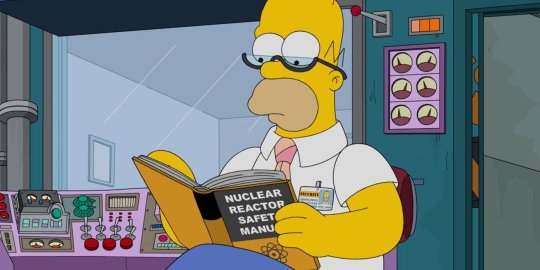
When The Simpsons first aired in 1989, nuclear energy was a relatively new concept that people didn’t know what to make of. But thanks to Homer’s buffoonery and Mr. Burns pettily evil brand of management, people’s view of nuclear power plants grew negative.
RELATED: Chernobyl: 5 Things That Are Historically Accurate (& 5 That Are Completely Fabricated)
Obviously this was a joke, but the accidental damage caused gave the real nuclear industry a headache. The showrunners were even given a tour of a power plant, but the public’s image of a nuclear energy plant as an unsafe toxic environment run by idiots persisted, sullying the reputation of a potential renewable energy source.
7 The Holidays of Future Passed Timeline
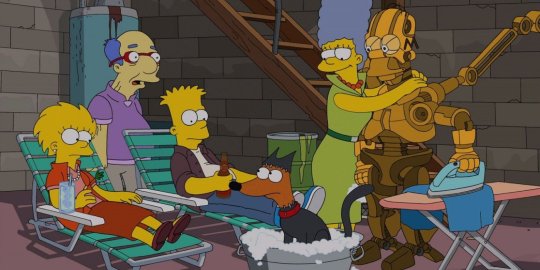
For all the flak that modern Simpsons gets, the holiday episode of the 23rd season proved to be one of the show’s greatest. Set 30 years later, Holidays of Future Passed shows what life is like for the Simpsons in what was supposed to be a series finale.
RELATED: Bob's Burgers: 10 Best Holiday-Themed Episodes, Ranked
The critically acclaimed episode wrapped things up in a touching way, so of course the showrunners revisited the timeline in Days of Future Future. As a result, the original episode’s emotional impact was nullified since Homer could beat death via cloning and the future was basically Futurama starring Bart.
6 Homer and Marge’s Hook Up

The episode The Way We Was shows how Homer and Marge got together in a lovingly and appropriately humorous way. According to this episode, the two fell in love during the ‘70s but then this is changed to the ‘90s in That ‘90s Show.
This confusing creative decision wasn’t even properly justified and is instead used to throw cheap shots at ‘90s trends, specifically the rise of grunge music. Following mass criticism, The Simpsons returned to its original timeline and effectively erased an episode that even a Weird Al Yankovic cameo couldn’t save.
5 Homer and Marge’s Divorce
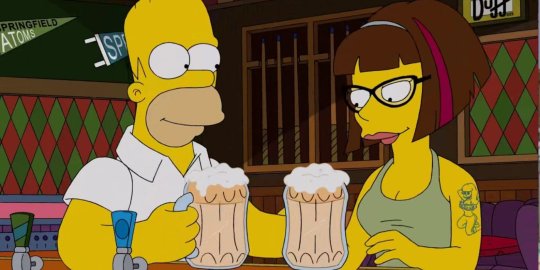
The controversial Every Man’s Dream is rightfully deemed as one of the worst Simpsons episodes because of how bad its writing is. Not only does it destroy the show’s beloved fundamental relationship (i.e. Homer and Marge), but it does so for a dumb punchline.
RELATED: Girls: 5 Best (And 5 Worst) Relationships
There was a lot of media coverage for the supposedly momentous split, only for the divorce and the events that led to it being a dream with a dream within a dream within a tattoo of someone on HBO’s Girls. To say that the episode is insulting is an understatement.
4 Ned Flanders’ Fundamentalism

Originally, Ned Flanders – a devout Christian and family man whose life just seemed too perfect for Homer – was just Homer’s comically virtuous foil. But as seasons progressed, Ned devolved from a Mr. Rogers-like figure into a self-righteous religious bigot.
This wasn’t accidental, as the writers addressed contemporary religious controversies and their own gripes with conservatism by taking it out on Ned. In fact, Ned’s drastic degradation inspired the term “Flanderization” on TV Tropes. Recent episodes rectified this, toning down the spite he embodied with corrections seen in The Simpsons Movie where Bart views Ned as a father figure.
3 Anything To Do With Apu
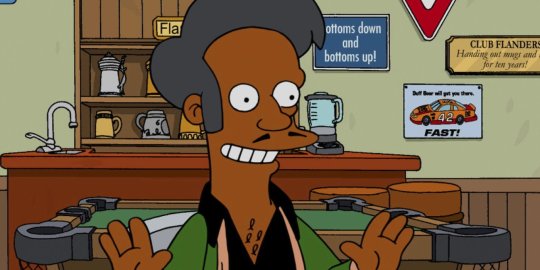
While he may be an irreplaceable resident in Springfield, Apu Nahaspeemapetilon was and still is a character born out of a racial stereotype. Credit should be given to The Simpsons writers for fleshing him out over the years, but the fact remains that Apu’s mere existence was a lightning rod for controversy.
The backlash hit a crescendo with the documentary The Problem with Apu, where comedian Hari Kondabolu called out the showrunners for perpetuating demeaning stereotypes of those with Indian and South Asian descent. In response, Apu was removed from the show, much to Matt Groening’s annoyance.
2 Homer the Sitcom Dad
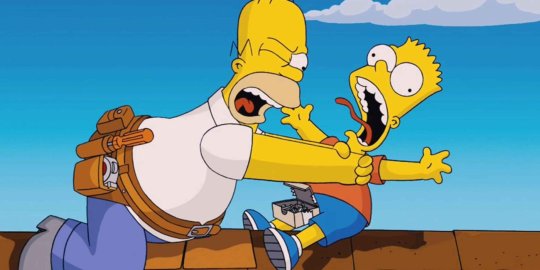
He may not be the first, but Homer Simpson is the definitive sitcom dad that other cartoons and series look to for inspiration. But as seen in many modern sitcoms that still play by the old rules, the stereotypical sitcom dad didn’t age well – especially not Homer.
When he’s not an incompetent idiot who lucks his way into getting what he wants, Homer can be a mean-spirited bully who lashes out on his kids. This has been somewhat addressed as of late, with Homer being more self-aware and sensitive but his old ways spring up every now and then.
1 Lisa’s Mistreatment

Ever since The Simpsons began, Lisa – a young intellectual – was shown as the only person in Springfield’s generally mediocre populace who could amount to something. And yet, the show goes through great lengths to punish her for her intelligence.
More often than not, Lisa is shown as an annoying know-it-all who everyone just begrudgingly tolerates. The argument could be made that Lisa is the writers’ avatar and they embody their struggles in hers. And yet, her episodic arcs almost always end with her submitting to the status quo and settling instead of finding something better.
NEXT: The Simpsons: 5 Reasons It Should Be Canceled (& 5 Why It Should Stay On The Air)
source https://screenrant.com/simpsons-storylines-aged-poorly/
0 notes
Text
In Bangkok, every street corner had carts of food, street art or a temple. While some of my friends told me not to spend much time there, I fell in love with the city. The land of smiles welcomed me with a delicious embrace.
Sleep: I stayed at the lovely and cozy Bed Station. Great staff, comfortable environment, social community, and the location was near the metro, the mall, and affordable street food. I loved the cat lounged on bean bags and snuggles with guests.
This is the hostel’s cat posing for the camera
Eat: I ate street food most of the time. Sometimes when I joined other travelers they’d go to restaurants but it’s a waste of money. You can easily eat a meal under $5.
Get Around: The metro is clean and easy to use. Wherever you can’t take the metro a water taxi is a cheap option as well. Tuk tuks are fun but overpriced but a novel experience.
Water taxi
Metro uses a chip to limit waste
cute tuk tuk
Places-To-Go (In order of importance)
The Grand Palace: Built in 1782, this architectural wonder is a must see. There’s also a temple to the Emerald Buddha. Only thing is it is incredibly crowded.
Wat Po (Temple of the Reclining Buddha): Giant, beautiful temple with a huge gold-plated reclining Buddha. It’s also right behind The Grand Palace. Make sure to wander around the complex and don’t just pop into the temple and leave. There’s a lot of amazing architecture to gawk at.
These are actually tombs. There are layers of cremated family members.
The Reclining Buddha plated in gold
I believe this is the monastery
Wat Saket (Temple Mount): the Incredible panoramic view is worth the ~300 steep steps. There is an unusual cemetery you will pass on your ascend up. This was the city’s crematorium for al ong time. At the top there is a little exhibit about sky burials as well. You can ring lots of bells and gongs! It’s super satisfying to hit a giant gong.
Wat Traimit (The Golden Buddha): The Buddha is 5 meters height and weighs half a ton. An interesting fact is the Buddha was disguised with plaster during a wat.
The entrance is a shrine to the king that passed
The gold buddha
a bowl you toss a coin into for luck
Khao San Road: All the bars with dancing in the streets.
Chatuchak Weekend Market: Fun place to shop for literally anything your heart desires. IT was the best market I have been to in Asia.
Bangkok Art Centre: A seven-story building with three floors serving as a museum and the others have smaller galleries, workshops, coffee shops and stores. It spent about 2 hours here looking at art. There was even a live band. It’s all free!!!
Lumphini Park: A nice park in the city center with a lake in the middle. Monitor lizards swim in the water.
Experiences
Eat street food: Street food generally runs afternoon and then there’s a break between like 3-6. Then they start serving until pretty late almost midnight. Tuesdays by The Bed Station there was no street food so the city has time to clean the streets.
Take a water taxi: See the sights and a mist on a water taxi! I took the water taxi from The Bed Station right to Temple Mount.
Ride in a Tuk Tuk: The drivers are reckless, the decorations are cheesy and it’s overpriced. Despite all of that, your Bangkok experience isn’t complete without one ride.
Visit the mall MBK: Seems like a weird thing to put on the list but seeing the Asian fashion and art installations were a lot of fun. It’s also near The Bangkok Centre of Art.
I used Get Your Guide to Book some Tours.
Bangkok Half-Day City and Temples Tour: This included Wat Po, Marble Temple, and The Golden Buddha. They had a private car pick me up at my hostel and a guide. I would not recommend it. A car is so much slower than using public transportation. The guide was nice but didn’t add a whole lot to the experience. You are better off doing it on your own.
From Bangkok: Ayutthaya Tour with Return River Cruise: A great day trip I wrote a blog post about.
Bangkok: The Land of Smiles and Pad Thai In Bangkok, every street corner had carts of food, street art or a temple. While some of my friends told me not to spend much time there, I fell in love with the city.
0 notes
Text
Paris
So Im gonna write a basic travel thoughts page per place I went starting from Paris. I’d try to recall how lapland was too in hopefully future entries but so here goes!
Paris.
The city of love and romance.
But also sadly, the city of pee.
No city smelt as bad as Paris did, each train, metro, bus and even at the Sacré-Cœur Basilique, with that amazing view, the smell of pee nvr left. Okay, I gotta try to start being more positive about things and stop looking at things from a negative point of view. But I really felt I had to get that point out.
Great amazing things about Paris: the architecture stole my heart, it just enveloped my entire being. Everything, every place and every building or house was just so unique, tasteful and just a wonder to me. Each had their own flavor, taste and vibe. Whether was it a nice, quiet restaurant with people just sitting to people watch and chill with the oh-so-wonderful weather (it was a perpetual 18 degrees there, probably just 10 in the evenings) my down jacket was rather excessive but I guess it was alright, there were plenty of tourists in Paris that were cold even in that ‘warmth’-funny how Sweden changed me so much, to tolerate the cold. So the buildings were just so beautiful, I remember taking the train out of the airport and looking out of the window only to see many landed houses with different and varying numbers of windows. differently colored and different types of bricks or materials used in its assembly. I was sold.
The weather as mentioned was great, warm and sunny, a nice warm but cooling breeze which Ale and I were really grateful for. Oh and Asian food!! On our first day there, besides having to skip going to the outlet stores because we didnt have much time to get from our airbnb to the outlets since we got pretty lost without internet (note to self to always get internet that works internationally) so we went to explore the city. Day 1 was lunch at 2/3+ before going off to see the Sacré-Cœur. The climb was alright but what made me weep tears of joy was my fav carousel right at the bottom of the basilique. The vibes of the place overall was really nice and pleasant. There were many people chilling, drinking a bottle of wine or beer or just chatting on the grass patch on the climb up the stairs to the church. Tourists were everywhere as with every tourist attraction but somehow the place didnt feel overrated. it wasnt swarmed with tourists and there was a unique and magical vibe to it. The street artists who were all around trying to earn their daily bread through caricature sketches, the nice restaurants that sold mussels and oysters in buckets at 14 euros (I was really so tempted). But there ale warned me about people who might pickpocket us, there were people who held different colored strings and she said they would hold the string out to us, the moment anyone touched it, they would ask you to pay them money or pickpocket us etc. It was kind scary but we hurried along. Oh, right at the top there was also a choo-choo train! it was pretty cool
Ale and I also bought 12 postcards at 2 euros yay! Next was the Arc de Triomphe, we managed to snap a few pictures but due to no reduced admission rates for us and to go up was 12 euros, I was pretty hesitant. Sharm did recommend us to go up but Ale said the weather was pretty cloudy and we prob could try tmr so we gave it a miss. From the Arc, we saw the Eiffel so both of us decided ourselves that it was quite near so we walked towards it. It was actually quite a walk but it felt kinda fun since we were ‘chasing the tower’ lol, always finding it amongst the buildings and its spotlight that shines throughout. The nightview of the Eiffel was really nice but there was not much magic vibes to it, maybe bcos it felt a lil overhyped. After which we got a little lost, took the wrong train from the wrong side and hopped on the dirtiest train i’ve ever been. The seats were fabric but they were so black and dirty. The red cushion seats were all blackish and they looked kinda mouldy. Much #grossness
Anyways Ale always having a great directional sense brought us back to the right path after one wrong stop, and we met Sharm at Quatre Septembre to go hunt for some Ramen that people recommended her. It was a chinese-ran restaurant that sold jap food. The gyozas were good but the ramen pretty much tasted like yellow noodles in a chinese broth. The cha siew was good thou i must admit. After that we had Grom gelato (only bcos I said it was a good brand that Robz & I tried in Italy) before sharing a jar of 50cl of white wine. Ale taught me a bit of how to drink the wine while we sat under a heater in one of the most popular and happening streets of Paris. Oh another thing thou, Deliveroo exists in Paris and the delivery guys ride bicycles! So i guess it feels weird that with SG being a much smaller place, rarely do you see people in bikes as in bicycles but rather its just bikes and cars. #thatswhyCOEhighlor the green olives they served there was really nice thou, the black ones tasted like they were soaked in water or just oil. The olive oil in the black ones were barely visible.
it was a great chill hangout before we left and rested up for the night. We started our next day early with the Lourve tour which we paid 24 euros for but ended up feeling very disappointed and cheated since he just shared some short story about how this Lourve came about (from a small tower and a wall elsewhere) to this-he hates the pyramid design so obv not much talk was given about this pyramid before leaving us to walk to the entrance and enter it ourselves. #sobz #byemoney
Inside the Lourve thou, it was a brand new story. We started off with the French sculptures and boy was it beautiful. Each sculpture felt like there was a life to it, its own story and feelings. Its lines were so beautiful, intricate and just so perfect in their own way. There were many students or people just chilling there and drawing life sketches of the sculptures. After that we kept getting lost but we saw the Napolean collection, the crazy Chandeliers around, the furniture before we attempted to see the French paintings. But bcos we kept getting lost, we ended up looking at the Egyptian collection. Much thanks to Ale for being alright to go to the Egyptian part of the museum with me. After the Lourve bcos there was free wifi, we decided to go hunt for bubble tea. We got lost and spent 1.5 hours around town before finding our Chatime! we had a crepe outside the Lourve too after getting lost half way and walking past it for like about the 3rd time.
After Chatime, we went to primark to shop for a bit. The collection was rather big but okay ish like no feels to splurge on anything. We went to Bershka too before we rushed to the nearest post office to mail our postcards. The mail lady didnt speak a word of english and boy was she inefficient. She had to flip thru her stack of stamps thrice and recount sets of 5 stamps before letting us pay and all. 10 stamps were pretty pricey and costed me 15.8 euros but oh wells. crap I just realized I forgot to write daddy a happy birthday post card:( but wait its in April okay, ive got time. phew.
It was a mad rush back home and we had to pass thru a black zone, there were so many blacks and police there, it felt like the entire atmosphere was really tense. The moment anybody made a mistake, the police were right there ready to arrest. We also saw some blacks making a living with a supermarket trolley as a bbq pit to cook kebab meats which I felt was pretty innovative and cool. I also love the buses here, uncles here stop when they see people running for the bus which doesnt really happen alot in SG. sigh. SG buses do come more frequently thou, but still that doesnt make up for bad behavior.
After dropping our things, we took a train to the concert. Broods was the opening act before Tove Lo and i didnt do much research on her so I nvr knew Tove Lo was so sexualized. Every song she was shaking and grinding her hips to it and she eventually flashed her tits at the audience too. I bought an autographed CD from her but it was weird bcos while heading back Ale was sharing with me about how Tove Lo was being pretty illuminati and Satanic and that Beyonce was the head of the illuminati. I was very thankful for her religious sharig althoug I have to admit after hearing all that i was kinda scared.
We ended the night cooking our only ‘meal’ of instant noodles before resting and heading to the airport by uber the next day. Thank god for uber for getting to our airbnb and to the airport. the public transport train ticket was far too ridiculous-10 euros for a single trip to the airport and we didnt even stay that far. Uber was just 11 euros per person-.-
Also pretty disappointed with the Paris duty free airport since the collection was so small, I couldnt get mommy’s and huijun’s clinique products. Ale and I each bought a crossaint there thou! It was really yummy
okay done for Paris its 1.45 in the morning here in LKP so im hungry and sleepy and tired and upset so i shld try to get some rest
Ciao
0 notes
Photo
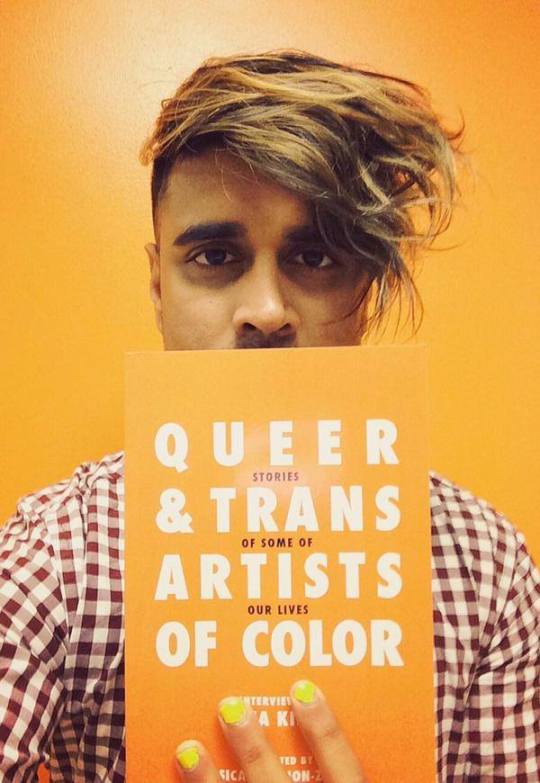
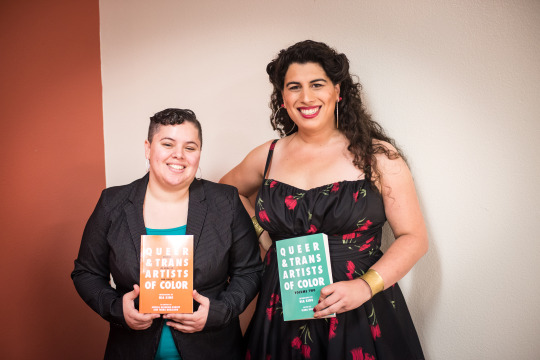
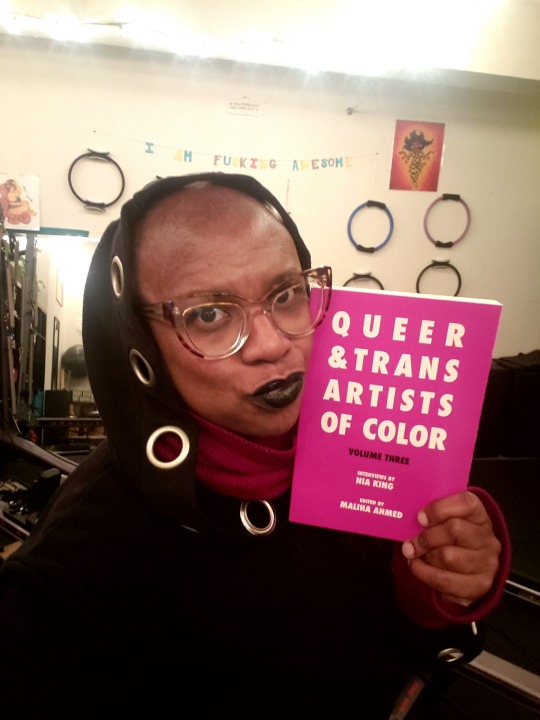
This pride month only! You can get all three of books in the Queer & Trans Artists of Color series ($60 value) for only $50, plus free shipping within the US. To place an international order, email niaking (at) zoho (dot) com. Order here.
Volume One:
A collection of sixteen unique and honest conversations you won’t read anywhere else... Mixed-race queer art activist Nia King left a full-time job in an effort to center her life around making art. Grappling with questions of purpose, survival, and compromise, she started a podcast called We Want the Airwaves in order to pick the brains of fellow queer and trans artists of color about their work, their lives, and “making it” - both in terms of success and in terms of survival. In this collection of interviews, Nia discusses fat burlesque with Magnoliah Black, queer fashion with Kiam Marcelo Junio, interning at Playboy with Janet Mock, dating gay Latino Republicans with Julio Salgado, intellectual hazing with Kortney Ryan Ziegler, gay gentrification with Van Binfa, getting a book deal with Virgie Tovar, the politics of black drag with Micia Mosely, evading deportation with Yosimar Reyes, weird science with Ryka Aoki, gay public sex in Africa with Nick Mwaluko, thin privilege with Fabian Romero, the tyranny of “self-care” with Lovemme Corazón, “selling out” with Miss Persia and Daddie$ Pla$tik, the self-employed art activist hustle with Leah Lakshmi Piepzna-Samarsinha, and much, much more. Welcome to the future of QPOC art activism.
Volume Two:
A celebration of queer and trans Black and brown genius… Building on the groundbreaking first volume, Queer and Trans Artists of Color: Stories of Some of Our Lives, NIA KING is back with a second archive of interviews from her podcast We Want the Airwaves. She maintains her signature frankness as an interviewer while seeking advice on surviving capitalism from creative folks who often find their labor devalued. In this collection of interviews, Nia discusses biphobia in gay men’s communities with JUBA KALAMKA, helping border-crossers find water in the desert with MICHA CÁRDENAS, trying to preserve Indigenous languages through painting with GRACE ROSARIO PERKINS, revolutionary monster stories with ELENA ROSE, using textiles to protest police violence with INDIRA ALLEGRA, trying to respectfully reclaim one’s own culture with AMIR RABIYAH, taking on punk racism with MIMI THI NGUYEN, the imminent trans women of color world takeover with LEXI ADSIT, queer life in WWII Japanese American incarceration camps with TINA TAKEMOTO, hip-hop and Black Nationalism with AJUAN MANCE, making music in exile with MARTÍN SORRONDEGUY, issue-based versus identity-based organizing with TRISH SALAH, ten years of curating and touring with the QTPOC arts organization Mangos With Chili with CHERRY GALETTE, raising awareness about gentrification through games with MATTIE BRICE, self-publishing versus working with a small press with VIVEK SHREYA, and the colonial nature of journalism school with KILEY MAY. The conversation continues. Bear witness to QTPOC brilliance.
Volume Three:
Is it possible to make art and make rent without compromising your values? Nia King set out to answer this question when she started We Want the Airwaves podcast in 2013. In her Queer & Trans Artists of Color book series, Nia collects podcast interviews — with Black, Latinx, Asian, Middle Eastern and Indigenous LGBTQ writers, musicians and visual artists — which feature both incredible storytelling and practical advice. In the latest installment, Queer & Trans Artists of Color, Volume Three, she discusses performing at the White House with VENUS SELENITE, the global nature of colorism with KAMAL AL-SOLAYLEE, writing for Marvel Comics with GABBY RIVERA, using lies to tell unspeakable truths with KAI CHENG THOM, Black mental health with ANTHONY J. WILLIAMS, curating diverse anthologies with JOAMETTE GIL, growing up trans in rural Idaho with MEY RUDE, covering crime as a baby-faced reporter with SAM LEVIN, feminist approaches to journalism with SARAH BURKE, documenting Black punk history with OSA ATOE, crossing color lines with QWO-LI DRISKILL, fat hairy brown goddesses with PARADISE KHANMALEK, the usefulness of anger with JIA QING WILSON-YANG, transitioning as death and rebirth with ARIELLE TWIST, surviving homelessness and touring the world with STAR AMERASU and much, much more.
26 notes
·
View notes